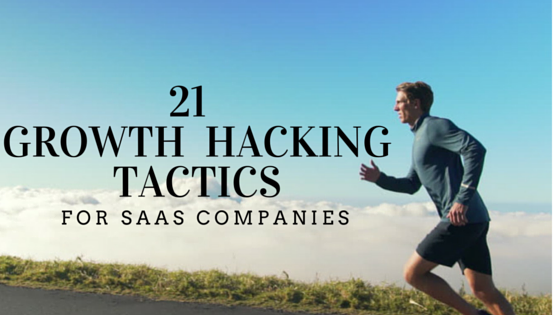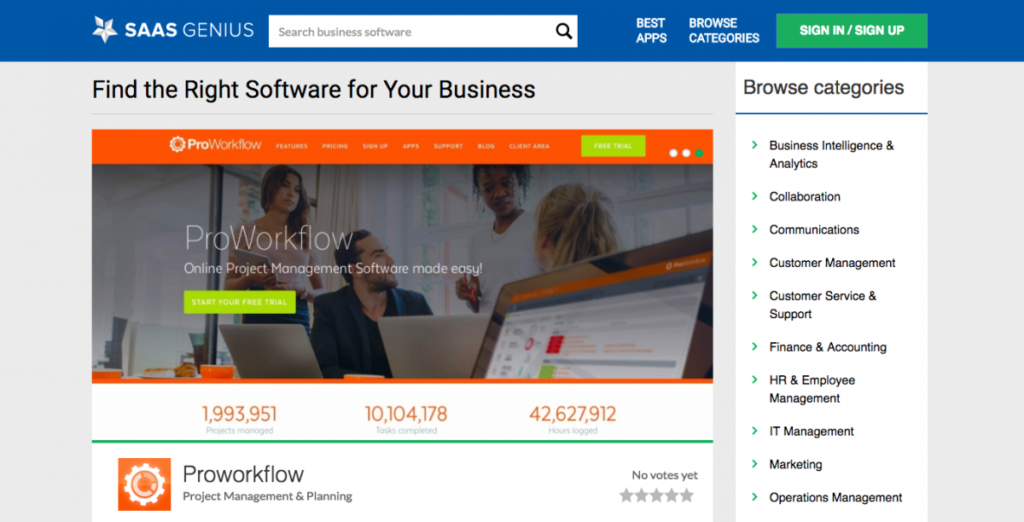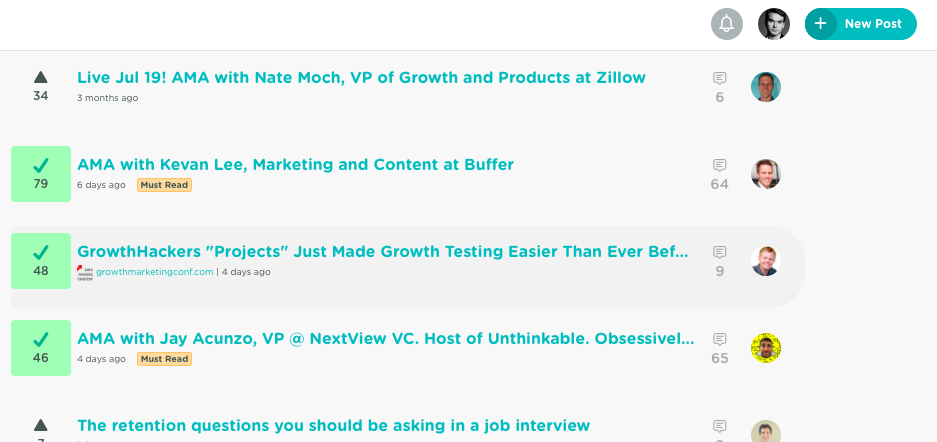
A SaaS company inherently refers to Software As A Service or a company that hosts an application. In doing so, you’re making this application available to interested users all over the world through the Internet.
In today’s day and age, you’re going to see changes in the digital platform even more than ever. These are web-based software that is flexible enough, not just for business use, but even for individual users. The advantage of running SaaS companies now is that they’re easy to customize and change the look and feel of the program. That way, the SaaS company becomes more attractive to the potential market of customers that it wishes to target.
Then, here goes your marketing strategies. Like any other company, you’ve still got to aim to reach your customers.
So, you’re done:
You’ve typed in those final lines of code. Ironed out a few technical problems beta testers have reported. And uploaded that last interface revision.
And now you begin to wonder:
How the heck am I supposed to attract users?
Use paid ads? Invest in SEO? Start boasting about the product on social media?
Or use content, like everybody else?
Well, all these strategies will work. But what you need right now is a quick way to introduce your SaaS to as many people as possible. After all, the truth is that not many people know about the presence of SaaS companies, and what they can do for the general public.
You basically need to hack your growth.
And here are 21 tactics that could help you with that.

Note: I divided these tactics into 3 sections to help you quickly find strategies most relevant to your current marketing goals.
Part 1: Attracting Qualified Traffic
1. Guest Post on Industry Blogs
By guest posting, it means leveraging other people’s audiences by sharing useful advice on their blogs.
Reach out to various industry blogs and offer an article you believe their audience would benefit from.
But, as tempting as it might be to take this directly to your advantage, don’t promote your app in those posts though.
Rather, use this guest posting opportunity to share advice or highlight solutions to your audience’s pain points. And only mention the app in your author bio.
With guest posting, you can quickly build your product’s awareness among new, highly qualified audiences.
Example: Buffer’s CEO Leo Widrich used guest posting to grow their userbase from 0 to 100000 in just 9 months.

2. Blog
I agree guest posting serves as a shortcut to someone else’s audience.
These people might indeed need and notice your app. But they don’t follow your brand. Or believe and trust you.
So what you also need is an audience of your own.
And the best way to build it is by launching a blog to share useful advice.
If you browse the Internet today, it’s natural for you to find many companies and businesses that also have blogs of their own. This is because blogging attracts market growth. At the start, target only users at the Awareness stage of the buying cycle – people focused on finding information about a problem they might be having.
Answer their most basic questions. Provide guidance on the best ways to address their pain points. And point them to more resources that could help them.
Lastly, optimize your blog to attract search traffic. 72% of people at the awareness stage turn to Google for information. So make sure that your content ranks high for keywords these people might use in their search.
Example: Kissmetrics blog, considered one of the biggest resources in the industry.

3. Promote your app with Facebook’s Lookalike Audience
At a first glance, Facebook ads don’t seem like a great way to find new users, right?
And yet, did you know that with Lookalike Audiences you could find and advertise to new users based on your current or past customers’ characteristics?
You could use their demographics and interests as a guide to finding new people who potentially could be interested in your app.
Example: SERPs.com Facebook ad.

4. Remarket to Previous Visitors
Fact: only 1% of web customers convert on a first visit.
For many others, however, it can take up to a couple of sessions before they’re finally ready to sign up for a demo or convert in any other way.
Luckily you can stay on top of their mind and remind them of their interest in your product with remarketing.
Remarketing lets you display ads to previous site visitors based on their browsing history.
For instance, you can display relevant ads to a person who bounced off the registration page to remind them of their intention to sign up.
And according to various studies, this is a heavily successful strategy:
Wishpond for instance reports that remarketed visitors are 70% more likely to convert. And the average CTR of remarketing ads is 10 times higher than Adwords.

5. Get Current Users to Attract More Users
Your current users might help you grow the customer base too.
And all you have to do is offer them a good enough incentive to do so.
Dropbox users for instance could earn 500MB of free space for referring a friend.

Important: test different incentives to find out what motivates users to refer your product. Different incentives will work better at various stages of the buying journey (i.e. newly signed up users vs. long-term users).
6. Integrate with Popular Platforms in Your Space
Make it easier to use your app by integrating with the most popular platforms your potential customers are already using.
This way you’ll:
- Overcome the prospect’s fear of developing new processes when they buy your app,
- Get a listing in the other apps’ Integrations directories, and
- Introduce your product to new audiences.
Beacon, a tool allowing to repurpose blog posts into eBooks offers a handy WordPress plugin, since this is the platform most marketers would use.

Viralsweep, an eCommerce sweepstake app, integrates with the majority of platforms a modern eCommerce owner would use.

7. Include Your App on Review Sites
With 61% of customers reading reviews before making a purchase decision and 88% using them to validate the quality of a business, not including your app on review sites is missing out on a major marketing opportunity.
Your profile page could easily become a landing page you could use to divert qualified users to your funnel.
Not to mention, provide the final social proof many users might need to make the final decision.
Example: SaaS Genius

Part 2. Content Promotion
8. Increase Referrals with Forced Virality
Request a visitor to take certain actions, like sharing the content on social media to view the rest of it.
For instance, write a massive guide helping users overcome one of their pain points. Offer all theory for free but restrict the practical part only to those users who first tweet about it.
Paywithatweet for instance offers a platform to enable payments with social shares.

9. Share Content in Online Communities
Almost every industry includes community sites aiming to deliver the best content to their users.
Growth Hackers and Inbound.org are two best examples in the online marketing space.
What these sites have in common is that users can recommend any content they found interesting to the community.
Of course, you can’t just submit your content and be done with it. These sites are communities. And as such, they require you to commit at least some of your time to them.
Log in to these sites regularly. Comment and rate other people’s content. Share helpful articles you’ve found online. Act as part of the community.
But every now and then, submit your content too.
It’s well worth the effort.
Example: Growth Hackers

10. Build in Sharing
Give your visitors tools to share your content with their audience.
Add social sharing buttons to the site and try using tools like an auto retweet. Set them up to include the post’s title, a pre-defined hashtag, and your social media handle.
And if you want to take this a step further, use apps that offer sharing analytics to better understand your social engagement.

11. Invite Influencers to Post on Your Blog
Have you ever tried being featured by an influencer on their site?
It’s damn difficult….
But featuring them on your site is incomparably easier.
Not to mention that it’s often more beneficial too:
When you feature an interview with an expert or their guest post, you attract their audience to your site. Get an opportunity to introduce your product. Share expertise. And start developing a relationship with them.
If you’re featured on their site, however, you’re only one of the guests passing by. A person is quite easy to overlook.
Example:

12. Repurpose Blog Posts as Slideshare Presentations
I’m amazed how Slideshare still remains a little-known secret in marketing. For instance, only 17% of marketers use it for product launches.
Yet with 60 million active users and 159 million monthly views, the site offers incredible promotion opportunities.
Plus, given the domain’s authority, posting Slideshare presentations offer an opportunity to rank for highly competitive keywords.
With this, it’s also easy to note that Slideshare presentations are one of the best ways to increase customer engagement, as it keeps your customers interested in what it is you’ve got to post and say. This cuts the boredom of simply reading through the text.
Example: Slidedeck by SEMrush.

13. Reach Out to People You’ve Referenced in Content
This is by far one of my favorite hacks.
If you’ve mentioned other people as sources in the copy, reach out to them and let them know about it. Email, DM or tweet them about referencing their work.
In turn, many will promote it to their audiences.
Automate the process with contentmarketer.io, an app that scans your post for sources and mentions, scouts the web for these people’s contact details and allows you to reach out to them en masse.

14. Align Your Content with Popular Pieces You Share Online
When you’ve got content about your SaaS company, it’s very important that you’re able to align this with popular pieces that you share online. Create this sense of connectivity, or else your visitors or potential buyers also will just lose interest in your company. As you may have consistently heard the golden rule when it comes to content marketing, to “make sure that your content ranks high for keywords.” This advice may sound all-too-common and repetitive, but it’s a classic one that always works. Keywords that are positioned strategically in your content will always make your piece rank well. Use snip.ly to display calls to action pointing users to your content on any other content you share online.
Snip.ly is an app that helps you promote content through other pieces you share online. With snip.ly you can attach a call to action pointing to your content on every page you share on social media.
Part 3: Conversion Rate Optimization
15. Test Different Landing Page Versions
Should your landing page be short or long to convert? Some people will claim that the former brings better results. Others will swear it’s the other way around.
In reality, though it depends on your target audience. Product. USP. Or even the copy.
Therefore, test different landing page variations to establish what elements help increase conversions.
Here’s a list of the most common elements to test:
- Call to Actions, their placement, copy, color, and size.
- Wording on a Page, from the message to the amount of content on the page.
- Page’s Layout, the position of various elements, their size, and color/contrast.
- Images, type of image, relevancy with the page’s topic, what they feature, size, and position.
- Pricing, USP, and Offer.
And here’s a handy guide to designing a proper landing page’s A/B test.

16. Use Expert or Celebrity Endorsements
Celebrity or expert endorsements add an extra layer of validity to your product.
The psychological mechanism causing why we constantly fall for this marketing trick is called the extended self.
According to this theory, we view our possessions as a reflection of who we are. And thus, look for products that could help us create or elevate our self-image.
Now combine that with an expert or celebrity your audience follows (and even strives to become similar to) and you have a winning formula.
Example: (Apparently) an endorsement by Jessica Simpson and aesthetician Nerida Joy helped Beautymint attract 500,000 visitors on day one of its launch (source).

17. Nurture and Activate Visitors with Drip Campaigns
Not every visitor’s ready to convert.
Some may need more visits while others, more convincing.
Target the former with drip campaigns – a series of emails sent on a predefined schedule.
Help customers solve their problems, offer valuable content, and use the drip campaign to nurture them until they’re ready to become users.
Drip campaigns are applicable to a wide variety of businesses and the power of email marketing cannot be understated. Whether you’re promoting products on Amazon Associates as an affiliate or scaling your e-commerce empire, drip campaigns are a powerful and effective way to engage your audience.
Example: Drip’s Email Course

18. Offer Social Proof On Your Landing Pages
Endorsements are just one way to convince visitors of your worth.
You could also include:
- User testimonials,
- Reviews and Ratings,
- Pictures of customers using the product,
- Case studies,
- Customer counts / Sales counts,
- Social statistics,
- Trust marks,
- Won awards and many more.
All these will help you grab your visitors’ attention and communicate your worth.
Example: Almost every SaaS landing page.

19. Try Different Call to Action Placements
It may seem obvious to put a call to action above the fold.
But study after study has rebutted this theory.
According to Clicktale for instance, the length of the page has no influence on the user’s scrolling behavior.
CXPartners’ test proved that faced with few options above the fold, users tend to scroll further down the page.
And, ContentVerve reported that in their tests below the fold CTA performed 304% better than the one above the fold.
Therefore, test your call to action placement. Even if having it above the fold may see the best option, your users might naturally prefer to scroll and read the whole page first.
Also, use software like Hotjar (check our Hotjar pricing review) to assess how your audience interacts with content on the page. It could help you identify the most optimal call to action placement.

Related: Try implementing psychological pricing next to your CTAs.
20. Use an Exit Strategy Popup
Display a popup message as soon the visitor decides to leave the site. These pop-up messages can contain anything – from reminders to subscription forms, or whatever suits it best for your SaaS company. Tools like Exit Monitor can help you turn abandoned visitors into trial users, and drip campaign subscribers. Or convert them in any other way.
Exit popups track visitors’ behavior. And once they detect an exit intent, they display a targeted offer.
Example: Exit Monitors’ exit popup that shows when you place the cursor above the browser’s address bar.

21. Compare Your Product to the Competition
Include a comparison of how your product stacks up against the competitors. This strategy could help you convert visitors who evaluate possible solutions to buy. In doing so, don’t go as far as talking foul about the competition. Keep it friendly by sticking only to talking about what you have as an asset against your competition.
Highlighting areas in which your app excels over competitors might help you win more targeted visitors, looking for a specific feature set.
Important: Be 100% transparent. Be clear about areas your app excels at and ones your competitor is winning.
Example: SERPs.com landing page features a detailed comparison with MOZ, their biggest competitor.

Final Thoughts..
For every SaaS startup, growth is critical. For one, you need to ensure a steady influx of new users until the funds run out. The last thing that you’d want to happen is to have everything laid out for the success of your SaaS company, and only have it fail later on. Using various growth hacking tactics gives you an opportunity to propel that growth. But remember, applying them requires much more than just blindly following a number of steps. You need to adapt them to your situation. Audience. Product. Unique selling proposition and millions of other things. Only then, whatever strategy you decide to test will stand a chance of success. Start with these tips enumerated above, and you’re sure to see the growth for your company that you’ve always desired. Good luck!
Methodology
- Who?
We are SaaS experts: Our specialists constantly seek the most relevant information to help support your SaaS business. - Why?
We are passionate about users accessing fair SaaS pricing: We offer up-to-date pricing data, reviews, new tools, blogs and research to help you make informed SaaS pricing decisions. - How?
With accurate information: Our website manager tests each software to add a Genius Score using our rating methodology to each product. Our editorial team fact-check every piece of content we publish, and we use first-hand testing, value metrics and leading market data.